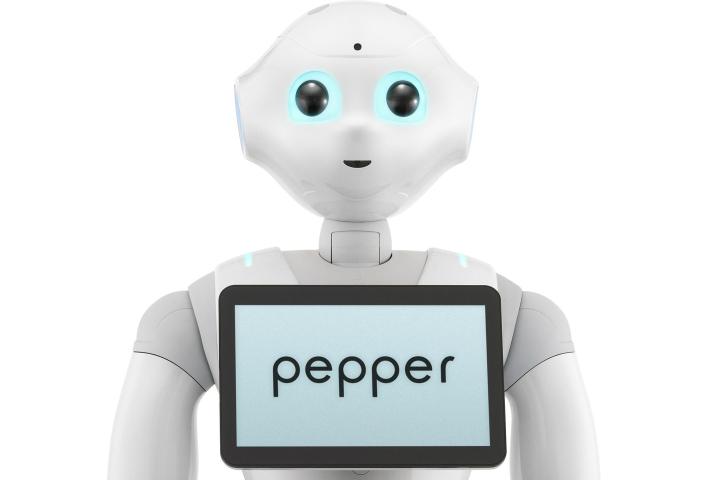
The Japanese company, better known for its telecoms and Internet business than for robots, unveiled Pepper in Tokyo back in June, touting the android for its ability to understand people’s emotions and communicate in a human-like manner.
In the US, Pepper will go on sale at SoftBank’s Sprint stores, though its dollar price and exact launch date are yet to be announced. Consumers in Japan can pick up a Pepper from February, though it’ll cost them 198,000 yen ($1900).
‘Emotion engines’
Besides what looks like a tablet strapped to its chest, Pepper comes loaded with sensors that work with “emotion engines” to help it make sense of its interactions with humans. The robot will also connect with the cloud to exchange data with other Peppers around the world to help it develop and hone its emotional responses.
At its unveiling a few months ago, SoftBank boss Masayoshi Son said the 120-centimeter-tall robot can “make jokes, dance and amuse people thanks to a wide variety of entertainment capabilities,” adding, “For the first time in human history, we’re giving a robot a heart, emotions.”
Related: Dyson drops $8 million into domestic robotics research
French robotic specialist Aldebaran and Japanese firm Yoshimoto Robotics Laboratory collaborated with SoftBank to develop Pepper, which is currently helping to serve customers at two of the carrier’s stores in Tokyo.
Pepper’s launch marks SoftBank’s push into new markets as it seeks to establish additional revenue streams. Soon after the bot was unveiled, the company created SoftBank Robotics, a subsidiary charged with pushing the new business forward.
The global robotics market is expected to expand at a rapid rate in the coming years, with some estimates putting its value at $120 billion by 2025.
For consumers and businesses
SoftBank Robotics boss Fumihide Tomizawa told Bloomberg this week that he expected sales of Pepper to be split fairly evenly between consumers and businesses.
He added that SoftBank has, in the past few months, received as many as 400 Pepper-related inquiries from businesses in finance, food, and education, though it’s unclear if the companies want Pepper to work in reception, perform duties in the workplace, or simply entertain the troops during lunch breaks. All will be revealed some time next year.
[Source: Bloomberg]
Editors' Recommendations
- U.S. Navy’s robot submarines could carry out autonomous attacks
- Autonomous robot deliveries are coming to 100 university campuses in the U.S.
- Soft robots can be formed into firm shapes using light and magnets
- This soft and flexible leech-inspired robot can climb walls


